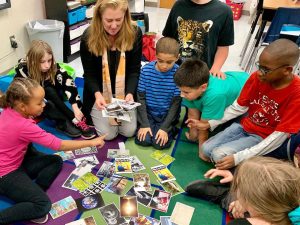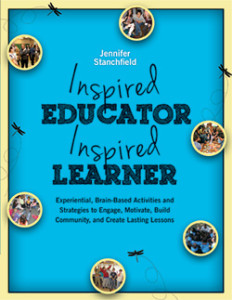Mar 18, 2024 Cultivate a Sense of Ownership and Enhance Engagement
One of the key tenets of experiential education is that people of all ages learn best when they perceive a sense of control and have choice and ownership in their learning experiences. You can create opportunities to build this sense of choice and control for participants from the very beginning of your time together. To cultivate what the educational philosopher John Dewey called “perceived internal freedom” and what neuroscientists tell us creates optimal conditions for learning, try some of the following techniques:
- Build relevancy and context from the very start of an experience. Create a hook or welcoming reflection to engage, draw learners in, and help them become more fully present in the classroom or group room space (see my post on Strong Beginnings).

- Facilitate meaning-making from the very beginning. Participants buy in when they understand the purpose of an activity and why the lesson is valuable to them. Rather than facilitating an “icebreaker,” engage the group in a thoughtfully designed “rapport builder” with relevant and meaningful reflective questions directly related to the group’s interests or purpose (See Hooks to Engage and Welcoming Rituals).
- Start with choice-centered activities sequenced at a pace that honors the introverts in the room (see my previous posts, “Beware of the Icebreaker” and Thoughtful Sequencing).
- Build up to whole circle group sharing by first starting with partner and small group reflection and dialogue.
- Remember, meaningful learning, reflection, and dialogue can happen within your group without you hearing it. Quality reflection and dialogue doesn’t have to be a public whole circle or whole class “report out.”
- Question the “default settings” and common structures we use in teaching and facilitation, such as whole group sharing circles or class hand-raising discussions, especially at the beginning, as it might not be the best way to start a group if we want to cultivate participation from everyone.
- Check out Quiet: The Power of Introverts in a World That Can’t Stop Talking book by Susan Cain, for a reflective piece on why we should question some of these “default settings” in education, group counseling, and training).
 When you progress to whole-circle or class discussions, invite participants to volunteer rather than ask them to share.
When you progress to whole-circle or class discussions, invite participants to volunteer rather than ask them to share.- Take brain research into account and design lessons/experiences that use multiple senses and involve movement and social interaction. Activities that use different senses and require different skill sets will reach more learners and increase attention and retention, creating multiple neural pathways to learning.
- Weave in ongoing reflection throughout the experience in a myriad of ways using multiple senses. Reflection doesn’t have to an “event” or didactic follow-up. Instead it can be an engaging part of the entire experience, during transitions and within activities. Ongoing reflection and dialogue builds positive norms and helps both the facilitator and the participants to share their expectations, requests, and goals for the group.
- Regularly check in and check for understanding, assessing the emotional temperature and the group’s progress.
- Think about the language you use in facilitation. For example, I use the terms “community builders” or rapport builders” as a friendlier alternative to icebreaker -reflection instead of debrief, and the word “invite” instead of ask. I also try to avoid acronyms whenever possible. See past posts on “the language we use in group facilitation.
- Treat participants as partners in learning. From the very beginning, give the group opportunities to have a say in designing the shared experience, even with small things like deciding how they match their “domino partner” or choosing the attention-getting technique the group is going to use for the day.
- Add options to group-building activities that allow the “it” person a way out or a way to participate at their own pace. For example, in the activity “Have You Ever,” if someone lands on the “hotspot” and can’t think of a question to ask, they can say “bananas,” and everyone moves—giving them a chance to get off center stage or the “it” position.
- Keep it interesting and culturally relevant: Get to know your group and weave culturally and socially relevant references into the experience. Props, humor, and relating activities and reflection questions to popular pop culture or events in the community are valuable strategies for increasing involvement. When you make participants partners in the experience this starts to happen naturally.
- Have flexible expectations. Sometimes, you need to take “baby steps” and celebrate small successes on the way. In working with youth, I have discovered that some learners never learned how to play and that many are not used to working in groups. Both of these skills take practice. For example, in facilitating the name game and community-builder Peek-A-Who with a group of first-graders, the first time we play it, we might spend all our time learning how to and practicing taking turns. And that’s okay because those are the social and emotional skills the group needs to work on the most.
- Create an atmosphere where learning from peers is cultivated and encouraged. Whenever possible, create experiences where peers can be role models and leaders.
Hopefully these ideas will help you facilitate your programs and lessons intentionally and meaningfully. Time spent up front building rapport in organic choice-centered ways will pay off later with increased trust, buy-in, ownership and involvement. Approaching teaching and groupwork with a belief that participants are partners in learning and designing experiences is what experiential learning is all about.
 Excerpt from Inspired Educator, Inspired Learner by Jennifer Stanchfield
Excerpt from Inspired Educator, Inspired Learner by Jennifer Stanchfield



No Comments